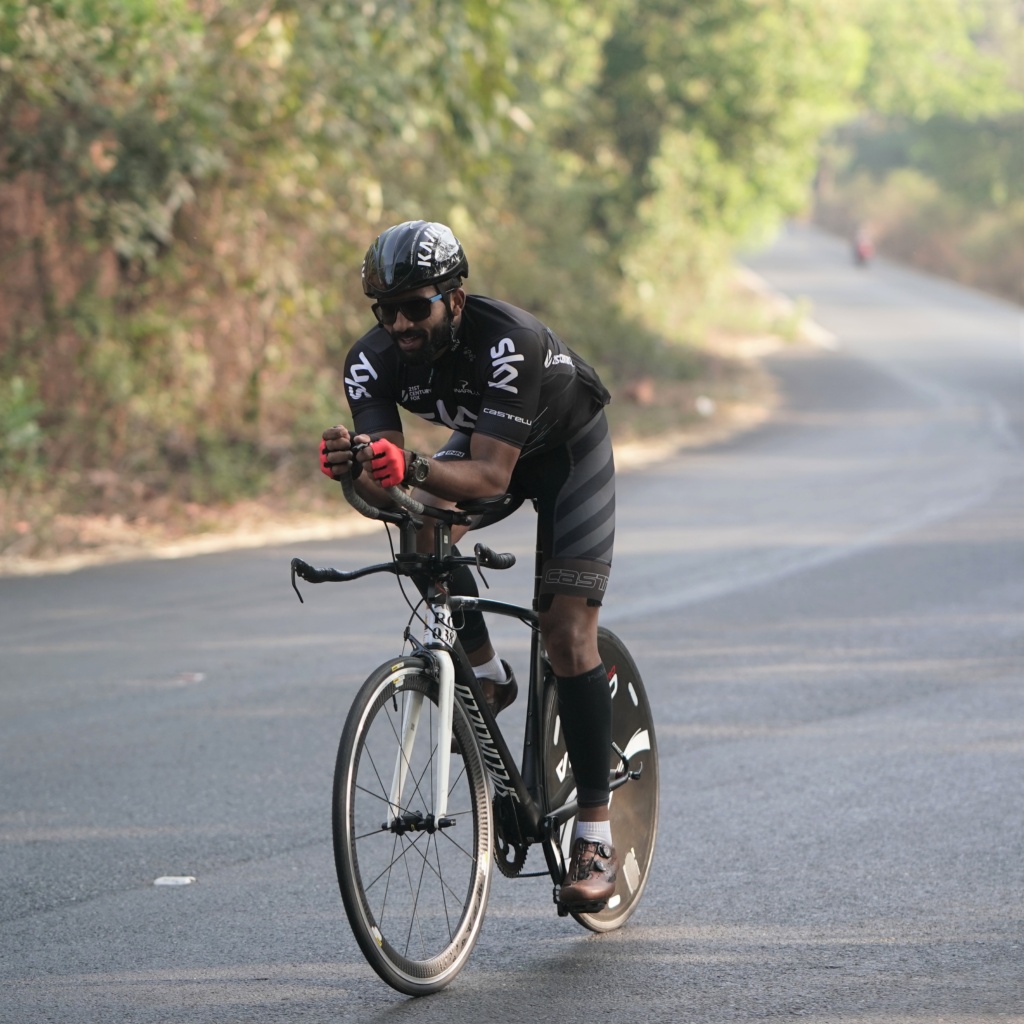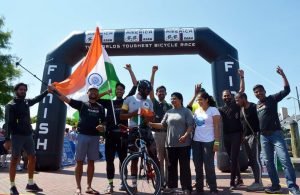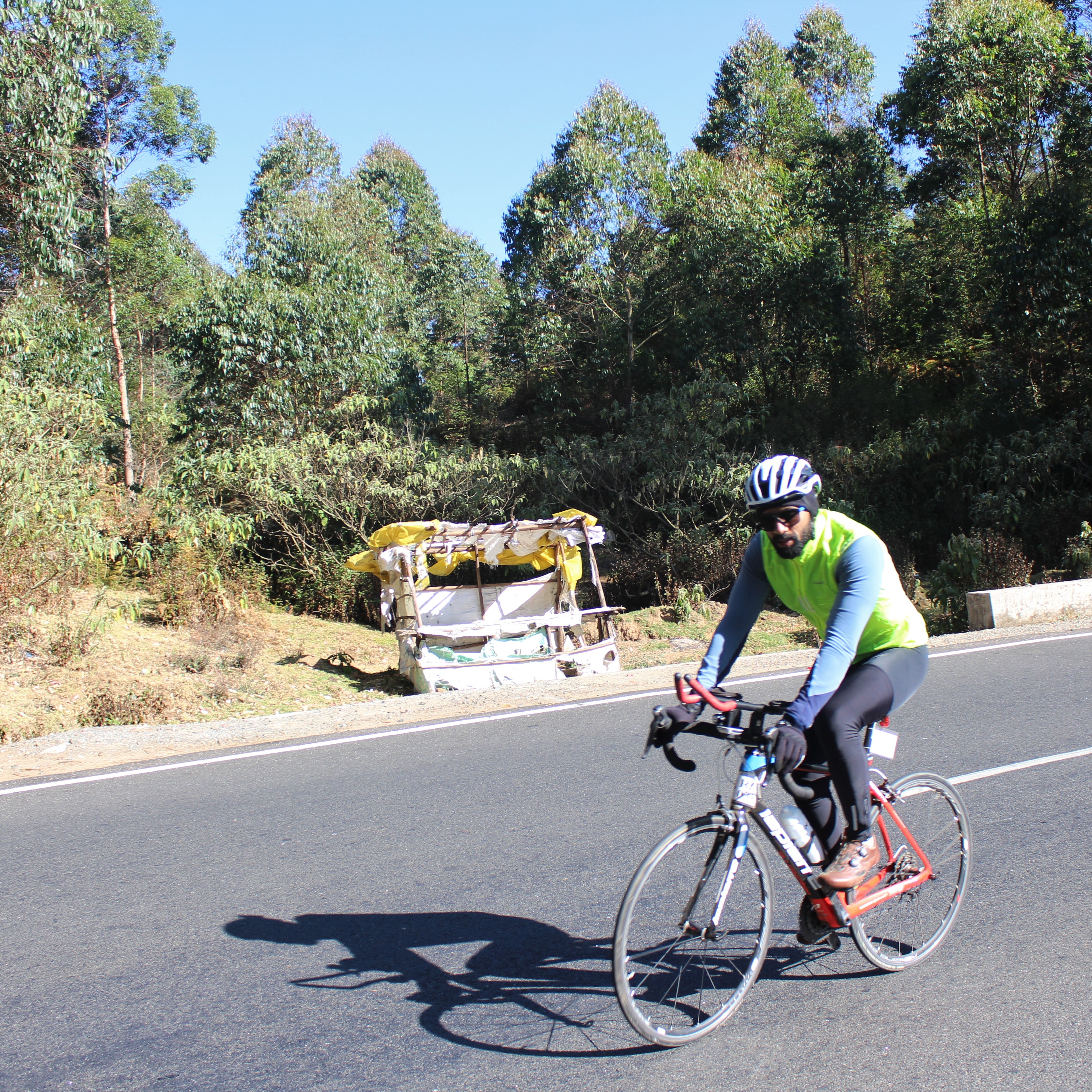Kabir Rachure bought his first bicycle in 2015. In 2019, he became the youngest Indian to finish the Race Across America

First published: https://sportslounge.co.in/cycling-through-the-odds-to-conquer-america-the-story-of-kabir-rachure/
Cycling through the odds to conquer America: The ‘ultra’ ordinary story of Kabir Rachure
About 70km from the finish line, Kabir Rachure crawled to a halt and broke down. He had endured 4,870km until then over the last 11 days, but was riding on just 20 hours of sleep. In that moment, he felt helpless.
The fatigue in the body finally set in and his bike had swerved onto the road a few times. His physio, Devyani Tikle, had spent time chatting with him over the radio for hours to keep him alert; another crew member, Ratnadeep Patil, had even sprinted alongside in a make-up race when his speed dropped to 9kmph, until it was brought to a rude end when he tripped and broke a tooth. All in a bid to see Rachure over the finish line of the Race Across America (RAAM) last month.
Time and again, the weather had tested him, as had his body. But by the end of it, he rode a scorching final leg to finish in a time of 11 days 22 hours 43 minutes to become only the third Indian finisher in the solo category and the youngest at 28 years.

To think that Rachure picked up a bike only in August 2015 speaks volumes of his discipline and his relentless desire to improve while in the saddle. At the same time, he had to balance the riding alongside a full-time job as a lawyer in Mumbai.
It started out with brevets, before taking on the 643km Deccan Cliffhanger from Pune to Goa in November 2016. The following year, he had his first look at just what the 4,940km-long race was all about, when he crewed another rider, Samim Rizvi, at RAAM.
Over the next few months, he changed his approach to ultra cycling while training under Miten Thakker. Thakker has been a full-time cycling coach since 2012 and is certified by the Association of British Cycling Coaches. The results showed when just before the RAAM attempt in January this year, Rachure pulled off his second Ultra Spice – a distance of 1,750km between Goa and Ooty – in 100 hours, which was 13 hours faster than his 2018 finish.
“I had targeted 90 hours but the roads weren’t in great condition and I didn’t want to risk a fall and get injured in the process. I felt really fresh at the end, yet I didn’t know what to expect beyond the 1,750km-mark,” he recalls.

More importantly, what fell into place after this race was his crewing team led by elder sister, Sapana, an ardent supporter who doubles up as a generous boss at work, handing him a three-month leave to prepare for the RAAM attempt.
“Come to work if you can earn Rs 30 lakh in that much time. That’s what will go down the drain if you don’t finish,” Rachure recalls her saying and smiles.
Through well-wishers back home in Latur, a crowdfunding campaign and his own friends, Rachure managed to raise about Rs 10 lakh; the rest was all from the family kitty.
“I kept thinking about the money invested and I don’t think there was better mental training, each time I thought about it. I realised there was a lot at stake,” he says.
He took the time off to put in the miles, racking up 1,800km in the final month, which was 600km more than his monthly average. Forty days before the start, Rachure traveled to the US to train in the blazing conditions of Borrego Springs, also picking up tips from eventual winner and now six-time RAAM champion, Christoph Strasser of Austria while riding a few miles alongside.
A day before the start, the organisers announced a heat wave for the next three days.
“I didn’t pay much attention to it. It had been a comfortable 14-16 degree celsius over the last few days and I just didn’t drink enough water – a big mistake in hindsight,” he says.
When Rachure lined up on June 11, he was now looking at riding through 12 states from the west coast to the east, with a total elevation of 1,75,000 feet over the course of the race.
Soon after the 1.30pm start, the temperature climbed to 42 degree celsius and around the 70km mark, Rachure started cramping, only to realise his physio was about 170km away at Brawley.
In the flat desert section where he was to make time, he struggled to get into the aero position and catch some speed. The night temperatures too were relentless and when he finally got to his physio, he struggled with the stretching and on the ride that followed. Things got worse the following morning in the Arizona desert.
“The tar was melting on the road and my Garmin recorded 58 degree celsius. My cooling vests, which usually take me through a day, were drying up in 30 minutes. The room where I was to sleep that night had the air conditioner on for two hours before my arrival, yet it was 36 degree celsius at night. I barely got any sleep,” Rachure says.
A few days later, it was the other extreme beyond Wolf Creek Pass (3,309m). Even as he used all the climbing experience that he had gathered while taking on the Fotu La (4,108m) during the Great Himalayan Ultra in Jammu & Kashmir in September last year, he was soon exposed to sub-zero temperatures.
The fatigue was evident by the time he entered Kansas and sleep came at a premium having lost so much time previously. Most times, it was a nap in the car by the side of the road, stealing precious minutes before setting off again in anticipation of the scheduled sleep breaks.
To break the monotony of the straight stretches that seemed to extend to the horizon, Rachure now took to talking to the wide-eyed cows grazing in the fields adjacent to the road, who couldn’t seem to let go of their curiosity until he was out of sight.
“There was not a soul around me. When the odd village arrived, it had just two huts and it really looked like a scene from a nuclear attack. And there was nothing to break the monotony of the landscape,” Rachure says.
Midway through the race, he struggled to walk and swayed like a drunk each time he got off the bike to rest, and had to be led by the crew like a toddler. Rain in West Virginia made the going tough as tornadoes raged in the distance.
Relief at times like these came in scrumptious fast food such as pizzas, burgers, doughnuts and hash browns, while Sapana whipped up some khichdi, chicken, dal-rice and friend aloo on the go.
“At times, it was nothing short of an eating competition – the only luxury on the course, really,” he says, chuckling.
After struggling with conditions along the route, Rachure finally got good tailwind for a 300km stretch that helped him build a time buffer. But with the goal in sight, he now struggled to hold it together.
Breaking down turned out to be a relief of sorts at that point, as he finally found his bearings again. Even as the crew contemplated a sleep break at the risk of missing the 12-day cutoff, Rachure set off on one final push.
The route to the finish ran through the streets of Annapolis and he took to catching a few winks at the traffic lights en route as a final resort. Yet, he pulled off a staggering 28kmph average speed towards the end.
When he checked in to mark the end of the race on June 23, he had made it there an hour and 17 minutes before the cutoff.
“In that moment, I had already decided that I needed to be back the following year to better my time. What I learnt through the race was that nothing is permanent and one needs to be prepared and patient. And the next time around, I want to target a finish in under 10 days,” he says.